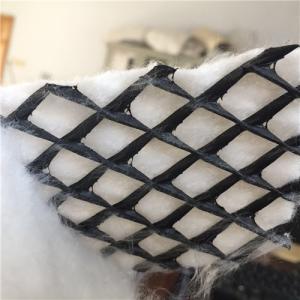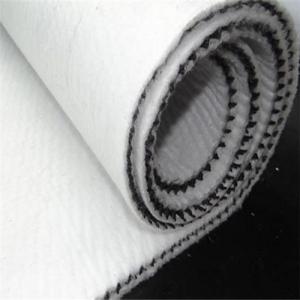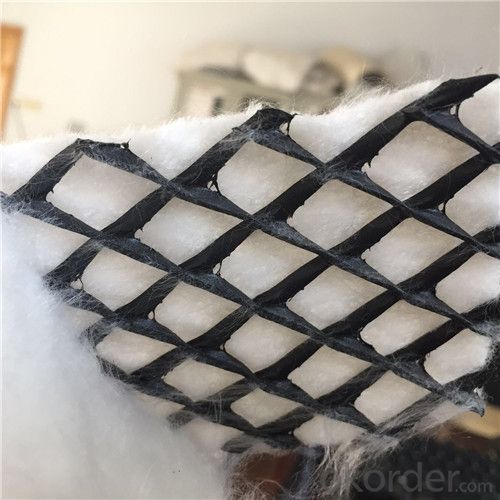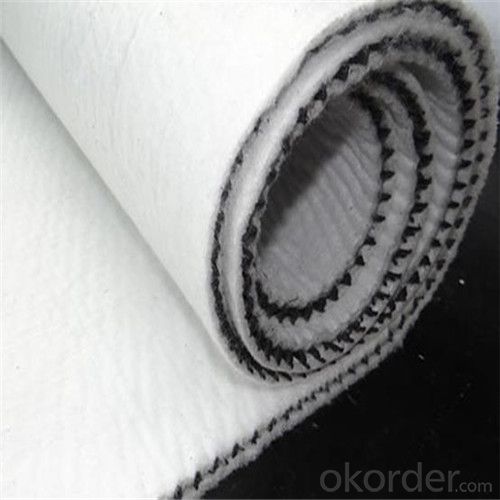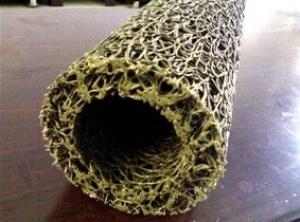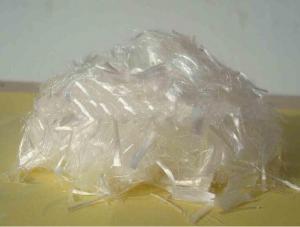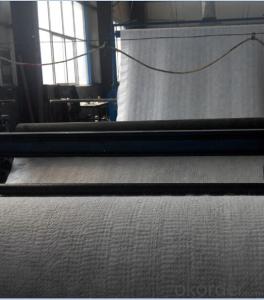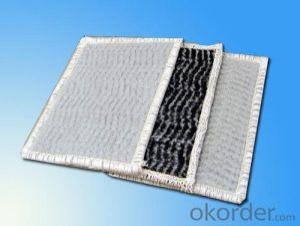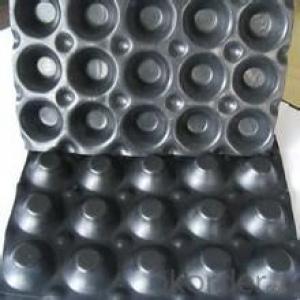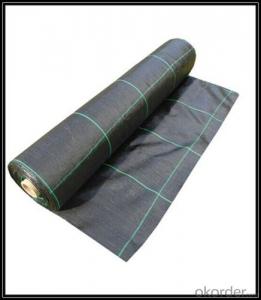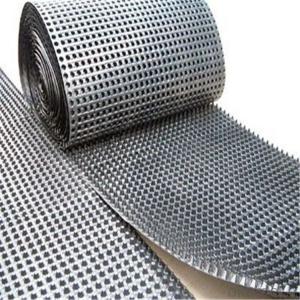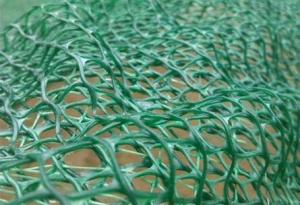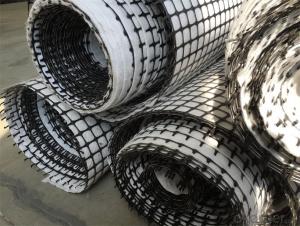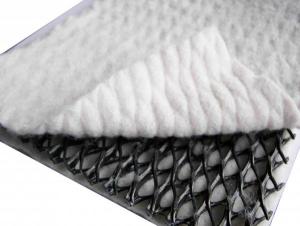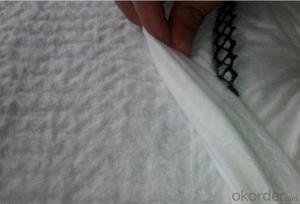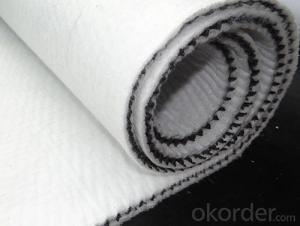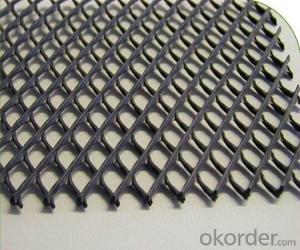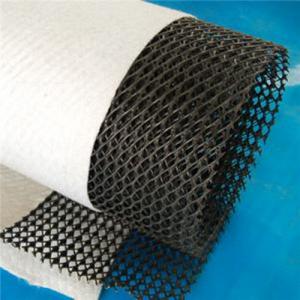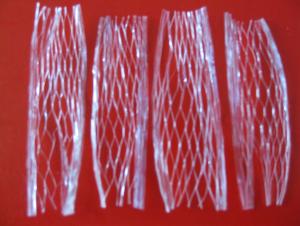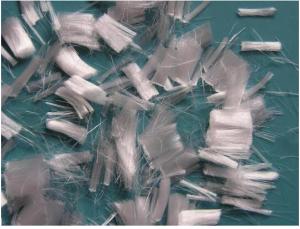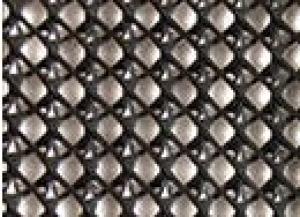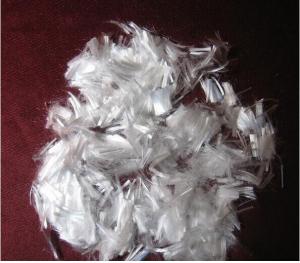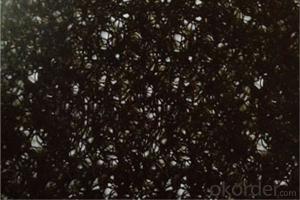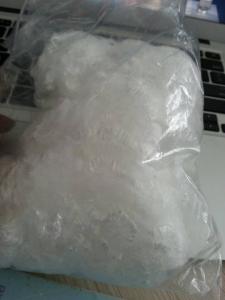Composite Geonet or Drainage for Retaining Back Wall
- Loading Port:
- Qingdao
- Payment Terms:
- TT or LC
- Min Order Qty:
- 1000 watt
- Supply Capability:
- 100000 watt/month
OKorder Service Pledge
OKorder Financial Service
You Might Also Like
Composite Geonet Description:
Composite geonet is a new type drainage material. It has three layers: three-dimensional geonet and nonwoven geotextile on both sides.
The material of geonet is HDPE, and the material of geotextile can be needle punched PET/PP nonwoven geotextile, and thermalbonded continuous filament nonwoven geotextile.
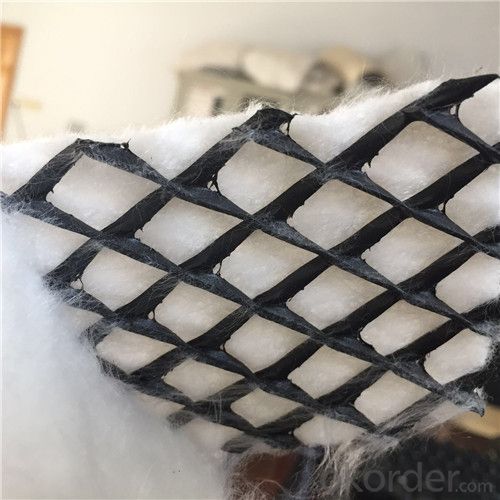
Composite Geonet Specification:
Thickness of geonet: 5mm to 8mm
Weight of geotextile: 200g/m2, as request
Width: 2m-4m
Length: as request
Composite Geonet Property:
Tri-dimension composite geonet has the property of geotextile (filtration function) and geonet (drainage and protection function), it can provide a function system: filtration-drainage-protection. The core of net with its unique tri-dimension structure can bear high
compression load in construction and remain certain thickness, provide good water conductivity.
Composite Geonet Application:
Landfill drainage, roadbed and road drainage, railway drainage, tunnel drainage, underground structure drainage, the retaining back wall
drainage, gardens and sports grounds drainage.
Packaing
Our packing is strong enough to withstand bumping and rough handling under normal condition.
We can accept add customer's logo on the package.
Our Service
1. OEM Manufacturing welcome.
2. Free Sample to see our quality.
3. We will reply you for your inquiry in 24 hours.
4. After sending, we will track the products for you once every two days, until you get the products. When you got the goods, test them, and give me a feedback.If you have any questions about the problem, contact with us, we will offer the solve way for you.
- Q: How do earthwork products affect the drainage system of a construction project?
- Earthwork products can have a significant impact on the drainage system of a construction project. Properly designed and installed earthwork products, such as drainage pipes, culverts, and retaining walls, can help manage stormwater runoff, prevent erosion, and maintain the stability of the surrounding soil. These products provide a means for water to be effectively directed away from the construction site, reducing the risk of flooding and water damage. On the other hand, if earthwork products are improperly installed or inadequate for the site conditions, they can hinder drainage, causing water to pool or accumulate in unwanted areas. This can lead to soil erosion, structural instability, and potential damage to the overall construction project. Therefore, it is crucial to carefully consider and implement appropriate earthwork products to ensure effective drainage and proper functioning of the construction site.
- Q: How are geosynthetic materials used in railway track stabilization?
- Geosynthetic materials are used in railway track stabilization by providing reinforcement and separation functions. They are typically placed beneath the track ballast to prevent the mixing of subgrade soil with the ballast, reducing the risk of track settlement and deformation. Additionally, geosynthetics enhance load distribution, increase the overall stability of the track, and improve the overall performance and longevity of the railway infrastructure.
- Q: Can earthwork products be used for canal construction?
- Yes, earthwork products can indeed be used for canal construction. Earthwork products, such as clay, soil, and aggregate materials, are commonly used in canal construction for various purposes. These materials can be used for excavation and leveling the canal bed, constructing embankments, lining the canal walls, and providing stability and erosion control. Additionally, earthwork products can also be used for backfilling and landscaping around the canal area. Overall, earthwork products play a crucial role in canal construction projects.
- Q: What are the benefits of using geosynthetic reinforcement for soil stabilization?
- There are several benefits of using geosynthetic reinforcement for soil stabilization. Firstly, it helps improve the overall strength and stability of the soil, making it more capable of withstanding heavy loads and preventing erosion. Secondly, geosynthetic reinforcement is a cost-effective solution compared to traditional methods such as using additional layers of soil or concrete. It reduces the need for excavation and disposal of existing soil, saving time and resources. Additionally, geosynthetic reinforcement is highly durable and resistant to environmental factors such as moisture, chemicals, and biological degradation, ensuring long-term stability. Lastly, it offers versatility in design, allowing engineers to tailor the reinforcement to specific project requirements and site conditions. Overall, geosynthetic reinforcement is an efficient and sustainable solution for soil stabilization with numerous advantages.
- Q: What are the safety considerations when using earthwork products?
- When using earthwork products, several safety considerations should be taken into account. Firstly, it is important to ensure proper training and supervision for workers who handle these products, as they can be heavy and may require specialized equipment for installation. Additionally, workers should be provided with personal protective equipment, such as hard hats, gloves, and safety glasses, to minimize the risk of injury. It is crucial to inspect the quality and stability of the earthwork products before usage to prevent any potential accidents or collapses. Adequate signage and barricades should also be placed around the work area to alert others and prevent unauthorized access. Regular maintenance and inspection of the products are essential to identify any wear and tear or potential hazards. Overall, prioritizing safety measures and following industry guidelines can help mitigate risks and ensure a safe working environment when using earthwork products.
- Q: How do earthwork products contribute to slope stability?
- Earthwork products, such as geotextiles, geogrids, and geomembranes, play a crucial role in enhancing slope stability. These products are used to reinforce the soil, control erosion, and provide stability to the slopes. Geotextiles, for example, act as a barrier between different soil layers, preventing them from mixing and improving overall stability. Geogrids, on the other hand, increase the soil's shear strength and resistance to sliding, while geomembranes help to control water flow and prevent seepage, reducing the risk of slope failure. Overall, earthwork products act as reinforcements and protective measures, contributing significantly to slope stability.
- Q: What are the major civil engineering courses?
- Steel structure design principle "" high-rise building structural design "" engineering geology "" engineering structure earthquake "" concrete and masonry structure "" concrete structure design principle "" basic engineering "
- Q: Can earthwork products be used for underground storage applications?
- Yes, earthwork products can be used for underground storage applications. Earthwork products such as geomembranes and geotextiles are commonly used in the construction of underground storage structures, such as tanks or reservoirs, to provide containment and stability to the surrounding soil or rock. These products help create a secure and durable environment for storing various substances, including water, chemicals, or waste materials.
- Q: What are the different types of geosynthetic tubes used in riverbank protection?
- There are several types of geosynthetic tubes used in riverbank protection, including geotextile tubes, geogrid tubes, and geocell tubes. Geotextile tubes are made of high-strength woven or non-woven geotextile fabric and are filled with sand or soil to provide erosion control and stabilize riverbanks. Geogrid tubes, on the other hand, are constructed using geogrid materials and are typically filled with aggregate or other materials to reinforce the riverbank. Geocell tubes consist of interconnected cells made of geosynthetic materials and are filled with soil or other materials to create a porous structure that prevents erosion and promotes vegetation growth. These different types of geosynthetic tubes offer various solutions for riverbank protection depending on the specific needs and conditions of the site.
- Q: Can earthwork products be used for soundproofing purposes?
- Yes, earthwork products such as soil, rocks, or clay can be used for soundproofing purposes. These materials have natural sound-absorbing properties that can help reduce noise transmission. Additionally, incorporating earthwork products into construction projects, such as building earthen berms or mounds, can create barriers that block or deflect sound waves, further enhancing soundproofing capabilities.
Send your message to us
Composite Geonet or Drainage for Retaining Back Wall
- Loading Port:
- Qingdao
- Payment Terms:
- TT or LC
- Min Order Qty:
- 1000 watt
- Supply Capability:
- 100000 watt/month
OKorder Service Pledge
OKorder Financial Service
Similar products
Hot products
Hot Searches
Related keywords
